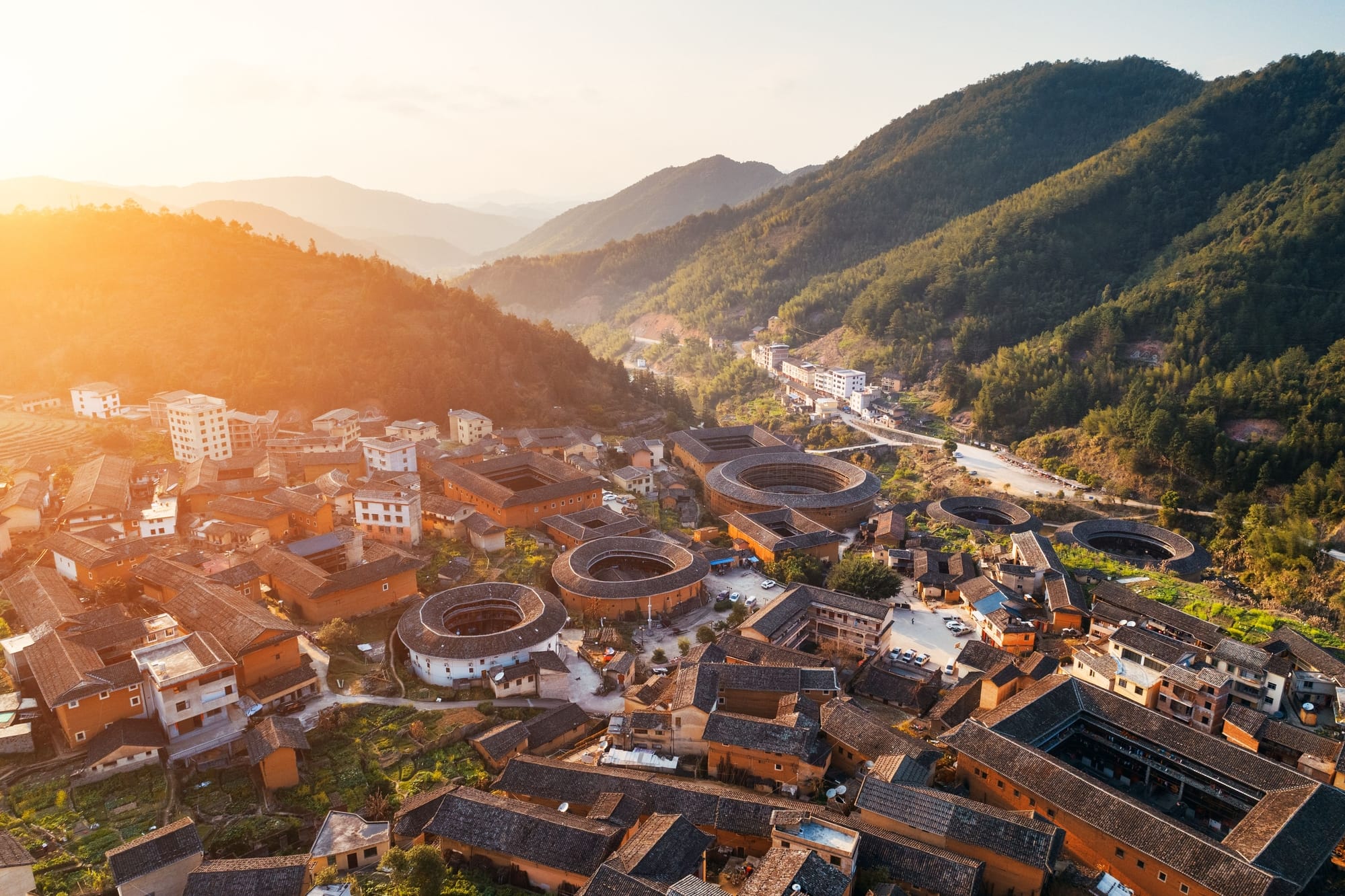First, Fuzhou, the capital of Fujian province, is bordered by the Min River and is home to many sites of interest. It is particularly famous for its lush parks and many temples with typical architecture.
One example is the Xihu Gongyuan, also known as West Lake Park, located on Mount Wolong northeast of the city. ►
First, Fuzhou, the capital of Fujian province, is bordered by the Min River and is home to many sites of interest. It is particularly famous for its lush parks and many temples with typical architecture.
One example is the Xihu Gongyuan, also known as West Lake Park, located on Mount Wolong northeast of the city. Its more than 40 hectares have inspired intellectuals and painters since its construction in 282. It is the best-preserved park in the region, which is why it is called "the pearl of Fuzhou gardens". This jewel has many points of interest that are worth a look, such as Kaihua Temple, the oldest building in the park or the Fujian Provincial Museum. The latter includes historical, archaeological and cultural relics from the Fujian region, including an extensive collection of Chinese handcrafted porcelain objects. You can only go through Fuzhou by walking through the famous and ancient district of Sanfang Qixiang. Indeed, this pedestrian area still seduces tourists thanks to its traditional houses built that give the impression of having leaped the past. You can take a sweet break in one of its many fruit juice cafes or tea rooms.
About 300 km northwest of the capital is a nature reserve known as the Wuyi Mountains. Listed as a UNESCO World Heritage Site, it has no less than 2802 km of mountain peaks dressed in greenery that form a landscape of extreme beauty. You can discover this lush and tropical vegetation aboard a raft on the river that winds through this mountain range. On the road, you will encounter the peak of the jade woman. According to Chinese legend, the daughter of the Jade Emperor fell in love with a local peasant; when the secret became known, the Emperor turned red with rage and turned the two lovers into rocks. Now, we can have the impression that these two peaks are observed thanks to the reflection of the river's water. Also, you should know that the Mount Wuyi region is home to one of the best Chinese tea: Da Hong Pao tea, thanks to which the Emperor's mother would have cured.
On the other hand, Fujian province is historically known for its Hakka fortresses, also called Fujian Tulou, scattered in several of its villages. Built of earth and clay, these buildings are square, rectangular, oval or round and have no opening on the outside to prevent bandit intrusion. Based on the same model as Beijing houses, Tulou are an example of community buildings. Indeed, their construction makes it possible to communicate all the rooms with each other and to encourage a harmonious relationship between the inhabitants of these fortresses. These Hakka houses are not all accessible to the public. However, some can be visited, such as the Nanjing Tulous, accessible by bus from Xiamen. During these visits, you can immerse yourself in the traditional life of a Hakka inhabitant and meet them.
◄
